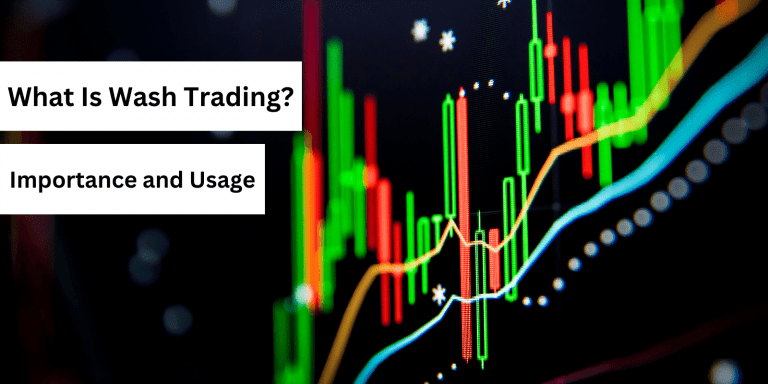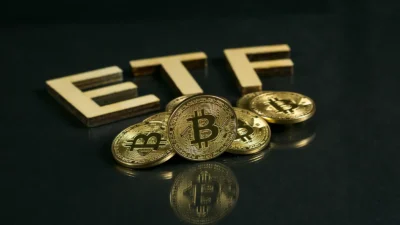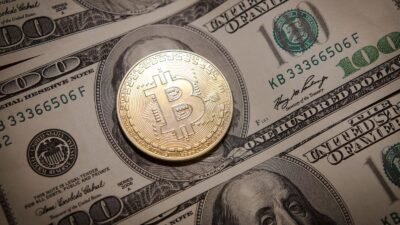Table of Contents
Toggle- What is wash trading in crypto?
- How does wash trading work?
- Benefits for traders
- What is wash trading in NFTs?
- The consequences of wash trading on the overall market
- Examples of how to wash trading have been used in the past to manipulate prices
- Ways to prevent wash trading from happening
- Frequently Asked Questions
Wash trading is a form of market manipulation that is often used in the cryptocurrency world. It is the act of buying and selling an asset to oneself to create the illusion of activity in the market. It can be used to boost or crash prices, and it is important to be aware of it when trading cryptocurrencies. In this article, we will discuss the importance of wash trading and how you can spot it in the wild!
What is wash trading in crypto?
Wash trading is a common practice in the crypto world that allows investors to artificially inflate the volume of a particular asset. In essence, wash trading is when an investor buys and sells the same asset within a short period of time. This creates the illusion of high demand, which can lead to price manipulation.
Wash trading is relatively easy to do on exchanges that don’t have strict KYC/AML requirements. However, it’s important to note that wash trading is illegal in many jurisdictions. As such, investors should be careful before engaging in this type of activity.
Why is it important to crypto exchanges and traders?
Wash trading is a commonly used tactic in the world of finance, and it’s just as prevalent in the world of cryptocurrency. In a wash trade, a trader buys and sells an asset almost simultaneously. From the trader’s perspective, wash trading is a way to manipulate the market and make a quick profit.
However, from the perspective of exchange or other market participants, wash trading can be detrimental. It can create false demand and distort prices, making it difficult to get an accurate picture of the market. In addition, wash trades can be used to launder money or evade taxes. For these reasons, it’s important for exchanges to be on the lookout for wash trading activity. However, people who buy bitcoin in Dubai from an OTC exchange are safe from wash trading.
How does wash trading work?
Wash trading is a type of market manipulation where a trader buys and sells a security for the purpose of inflating the apparent volume of trading activity and creating artificial price movements. This is typically done by creating two orders that are offsetting, or “washing out,” each other.
For example, a wash trade might involve buying shares of a stock at $10 per share and then selling the same number of shares back to the market at $10.01 per share. By doing this, the trader appears to be actively buying and selling the security, when in reality they are just cancelling out their own trades.
Wash trading is illegal in most markets, as it creates a false impression of market activity and can be used to manipulate prices. However, it can be difficult to detect wash trading, as it often takes place on off-exchange markets or through complex financial instruments.
Benefits for traders
1. Wash trading is a type of market manipulation that involves creating the illusion of buying and selling activity in order to artificially inflate the price of a security.
2. Wash trading can be used to generate profits in a number of ways. For example, a trader may buy a security at a low price and then sell it at a higher price after the wash trade has been executed.
3. Wash trading can also be used to create artificial demand for security, which can lead to higher prices.
4. Wash trading is not illegal, but it is considered to be unethical by many in the financial community.
5. Some exchanges have implemented rules designed to discourage wash trading, but these rules are not universally enforced.
What is wash trading in NFTs?
Wash trading is a type of trading that occurs when a security or commodity is traded simultaneously on both the buy and sell sides of the market. This type of trading can be used to artificially inflate the price of a security or commodity, as well as to generate trading activity in order to create the appearance of market liquidity.

In the world of NFTs, wash trading can be used to manipulate the prices of certain assets, as well as to generate false demand for those assets.
The consequences of wash trading on the overall market
1. Wash trading is a type of market manipulation that involves creating the illusion of buying and selling activity in order to artificially inflate the price of a security.
2. Wash trading can be used to generate profits in a number of ways. For example, a trader may buy a security at a low price and then sell it at a higher price after the wash trade has been executed.
3. Wash trading can also be used to create artificial demand for security, which can lead to higher prices.
4. Wash trading is not illegal, but it is considered to be unethical by many in the financial community.
5. Some exchanges have implemented rules designed to discourage wash trading, but these rules are not universally enforced.
Examples of how to wash trading have been used in the past to manipulate prices

1. Enron
Enron, an American energy company, was found to have engaged in wash trading in order to manipulate energy prices. Enron would buy and sell energy contracts with itself in order to create the appearance of high demand for energy. This would then allow Enron to charge higher prices for energy. Enron ultimately collapsed due to its widespread fraud, and several executives were convicted of criminal charges.
2. Sumitomo Corporation
The Sumitomo Corporation, a Japanese conglomerate, was found to have engaged in wash trading in the copper market. Sumitomo sold copper contracts to itself in order to create the appearance of high demand for copper. This allowed Sumitomo to drive up the price of copper and make profits on its own stockpiles of the metal. Sumitomo was fined $150 million by US regulators for its role in manipulating the copper market.
3. Crude Oil Futures
In 2008, it was discovered that a number of traders were engaged in wash trading in the crude oil futures market. The traders bought and sold oil contracts with each other in order to create the appearance of high demand for oil. This allowed them to drive up the price of oil and make profits on their own holdings of crude oil.
Ways to prevent wash trading from happening
1. Improve Regulation
One way to prevent wash trading is to improve the regulation of the crypto markets. This could involve requiring exchanges to report suspicious trading activity, as well as increasing the transparency of order books. Additionally, regulators could impose penalties on individuals or firms that engage in wash trading.
2. Increase Transparency
Another way to prevent wash trading is to increase the transparency of the crypto markets. This could involve requiring exchanges to provide more information about their order books, as well as making trade data more readily available to the public. Additionally, greater transparency would make it easier for regulators to identify and punish those who engage in wash trading. People can also use transparent OTC exchanges to buy and sell USDT to avoid it.
3. Improve Surveillance
Improving surveillance of the crypto markets could also help to prevent wash trading. This could involve exchanges working closely with law enforcement agencies to identify and prosecute those who engage in wash trading. Additionally, exchanges could implement their own surveillance systems to detect and deter wash trading.
4. Educate Investors
Educating investors about the risks of wash trading could also help to prevent it from happening. This could involve exchanges providing information about wash trading on their websites or through educational materials. Additionally, industry groups could create awareness campaigns that educate investors about the risks of wash trading.
5. Implement Trading Limits
Another way to prevent wash trading is to implement limits on the number of trades that can be made in a given period of time. This would make it more difficult for traders to engage in wash trading, as they would not be able to make enough trades to profit from it. Additionally, this would make it easier for exchanges to detect and deter wash trading.
Frequently Asked Questions
How do you detect wash trade?
A wash trade is a trade that is executed for the sole purpose of generating commission income and not with the intent of taking a position in the market. Wash trades are typically executed by two parties who have a pre-existing relationship and one party will sell to the other party and then immediately buy back the same security from them. This creates the illusion of active trading without actually contributing anything to price discovery.
To detect wash trades, exchanges rely on their order book data to identify patterns that suggest that a trade has been executed for the sole purpose of generating commission income. Some common indicators that can be used to identify wash trades include high-frequency trading, large orders relative to average daily volume, orders that are close in price to each other, and orders that are close in time to each other.
Is the wash trade illegal?
There is no definitive answer to this question as it depends on the specific details of each case. Generally speaking, wash trading is considered to be a form of market manipulation and is therefore illegal under certain circumstances.
How do I avoid a wash sale?
There is no one-size-fits-all answer to this question, as the applicable rules for wash sales vary depending on your country and tax jurisdiction. However, a few tips on how to avoid wash sales in crypto include:
1. Keeping track of your trades – Keep track of all of your cryptocurrency transactions so that you can be sure to stay within the allowable 30-day window for a wash sale.
2. Avoid buying and selling the same coins – If you buy a coin, hold it for at least 30 days before selling it again. This will help ensure that you don’t trigger a wash sale.
3. Use different exchanges – Use multiple exchanges to trade different cryptocurrencies like Ethereum, Bitcoin, USDT, etc. as this will help minimize the risk of wash sales.
Why does the wash sale rule exist?
The wash sale rule exists to prevent investors from claiming losses on their investments while still maintaining control of the invested assets. By selling an asset and then buying it back (or vice versa), investors could artificially lower their taxable income, but the wash sale rule prevents them from doing so.
The wash sale rule stipulates that if an investor sells an asset at a loss and buys it back within 30 days before or after the sale, the loss is not recognized for tax purposes. This is designed to prevent taxpayers from selling a security at a loss and then immediately buying it back in order to claim the loss as a tax deduction.








